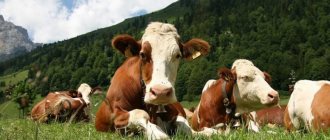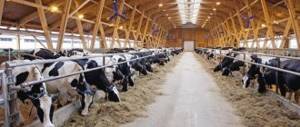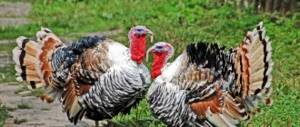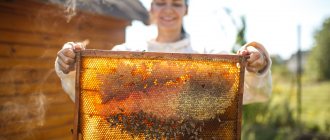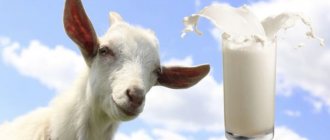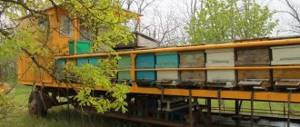Today, the situation on the dairy products market is such that demand significantly exceeds supply. And this despite the large number of enterprises involved in milk production.
The need for import substitution has led to an increase in demand for domestically produced goods and has influenced the fact that the state today provides support to small farms engaged in milk production. Therefore, a business plan for opening a 10-head cow farm can be an excellent means of generating income.
Overview of the dairy industry in the country
Milk is an essential commodity. Demand for it remains stable even in the event of a crisis and when income decreases. At the same time, alternative goods, for example, goat milk, have little chance of shifting the main object of demand.
Until 2000, dairy production volumes were decreasing, and only by 2015 did productivity begin to increase again. At the same time, an interesting trend emerged - the volume of small-scale production in the market increased, which in terms of development speed overtook large dairies.
In 2015, milk consumption in Russia amounted to 230 kg per person per year. This figure is 2 times less than the recommended norm. But in general, according to experts, there is a positive trend, and demand is increasing by 2.5% annually.
Also in Russia there is a lack of production of its own cheeses and other dairy products.
Another “spurt” in the dairy business began to be observed after the introduction of a trade embargo. The main importer at the moment is Belarus. The state began to actively support farmers within the framework of the “Development of Dairy Animal Husbandry” program.
The peculiarity of the milk business is the need for large investments at the first stage, which is why payback occurs only after 3-5 years, which requires careful planning of activities, a well-thought-out business plan and continuous development.
Business plan for cow breeding
If you want to build a successful livestock enterprise, be prepared not only for financial expenses, but also for the need to stock up on knowledge, skills and patience. Try to find out more about how a cow farm lives, what processes occur inside it, and build a strategy for the operation of your livestock complex.
Before considering cow breeding as a business, it is important not just to inquire about the breeds of these horned animals, but to study in detail a number of essential points:
- beef and dairy cow breeds, differences, pros and cons;
- requirements for keeping animals (summer and winter);
- types of feed, their characteristics, rules for feeding cattle;
- ways to sell all the enterprise's products, including manure.
Only after carefully familiarizing yourself with these issues can you start talking about how to make a business plan for breeding cows.
We can offer four approximate options for organizing a livestock enterprise with cattle breeding:
- Breeding meat animals and selling meat.
- Focus on dairy breeds, production and sale of dairy products.
- A combined approach, that is, the production and sale of both dairy and meat products.
- Breeding and sale of young animals.
First, test your region for competition. There is no point in building one farm almost at the gates of another. And be sure to think about sales channels and, in general, whether you can expect sufficient demand for your products in a particular region. Consider selling milk and meat to other cities and towns, as well as to markets and stores.
How to make a business plan for breeding cows, what points are required in it:
- Market sounding.
- Competent legal preparation of all documents.
- Preparing the territory and purchasing the necessary equipment for keeping animals.
- Purchase of cows.
- Providing them with enough food.
- Hiring employees.
- Organization of sales channels for finished products.
- Competently conducting calculations for items of expenses and income of the enterprise.
Please take into account that profits from the farm will begin to flow no earlier than a year after the start of operation of the enterprise.
Support and lending to dairy production
Since there is a huge demand for milk among the population, and organizing milk production requires large expenses, the Ministry of Agriculture provides all possible support to entrepreneurs in 3 different areas.
- partial reimbursement of expenses for business projects - up to 40% of the costs incurred for the purchase of new equipment for modernization and up to half the cost of the purchase of new highly productive breeds of cows are reimbursed;
- subsidy per liter of milk sold (only of the highest quality) - you need to submit a subsidy to the local administration department;
- subsidizing part of the loan when applying for a bank loan to start a business (only in accredited banks) - the federal budget covers up to 100% of the refinancing rate, the regional budget - 3% of the amount borrowed.
The distribution of subsidies depends on which regions have more or fewer manufacturing enterprises. When deciding where exactly to open a business, it is recommended to study official statistics.
Features of breeding dairy cows as a business
In the post-Soviet space, organizing a farm to produce milk is a profitable business. And the farmer himself has the opportunity to provide himself and his family with natural and pure products. If the goal of production is milk, then you need to understand the breeds of cows and choose dairy breeds for your farm.
Breeding cows for milk as a business is a very important component of all modern livestock farming. As for meat, only 15% of all meat products on the Russian market are beef. While cow's milk accounts for 90% of the total consumption of dairy products. The figure is impressive. Therefore, farming is a profitable business for both entrepreneurs and investors. That is why raising cows at home as a business is becoming increasingly popular.
According to statisticians, one person consumes 250 kg of dairy products on average per year. If you count by days - 700 g per day. It seems like a lot, but doctors recommend consuming about 30% more. This is good for health, but it doesn’t always work out, especially for residents of big cities.
The Ministry of Agriculture considered that, despite the general “shortfall” in consumption, Russian livestock farming still does not provide the entire required volume of dairy products for the population, but only about 80% of the required norm. Although, according to the established minimum level of food security, it should be above 90%.
In general, if we take into account the indicators of the general state of dairy production, then raising cows for milk as a business looks quite attractive and promises good prospects. The increase in milk producers on an industrial scale, as well as the number of milk yields (per cow), has been a trend for many years.
Thus, new small farms do not risk losing the funds invested in development, but rather, on the contrary, have the opportunity to quickly pay for themselves.
Farms even have an advantage over large livestock operations in that they are more flexible and able to catch the wave more quickly and respond to rapidly changing market conditions. Each farm is unique in its own way, and you will not find the same in two neighboring regions.
When the number of livestock on a farm is small (20–30 cows), it is much easier to find the opportunity to graze animals in meadows all summer (and free ones that do not belong to anyone). This cannot but affect milk yield, and, consequently, the rate of return on investment for the farm.
With all of the above, breeding cows for milk as a business will be a profitable business only if the aspiring entrepreneur competently approaches the choice of purebred animals for his farm with maximum productivity. And there is such a possibility. You don’t have to travel far to buy such cows; they can be bought here, at breeding farms in Russia.
The most popular breeds of cows in our country:
- Black-and-white. The undisputed leader among the rest. Half of the entire dairy herd is a black-and-white cow. Such a cow produces approximately 5500–8500 kg of milk per year (depending on feeding).
- Holstein. It was developed in North America in the early 1980s. Young breed compared to others. In one milking it produces at least 30 kg of milk, and in a year, in the Russian climate, approximately 7400 kg.
- Kholmogorskaya. A long-known and well-established breed. Annual milk yield is approximately 8000 kg, subject to proper and adequate feeding. However, this figure is for individual individuals. More often, one animal of this breed produces milk from 4000 kg to 6000 kg per year.
- Yaroslavskaya. Truly Russian breed. The annual milk yield per animal is 3500–6000 kg, but there is a recorded record, which is indicated by the figure 11590 kg of milk per year.
As in any business, it is important to carefully and scrupulously think through where to start and how to succeed so that cow breeding as a business becomes a profitable enterprise for you.
In the case where an entrepreneur plans to organize a small farm with 20–30 animals, most likely he will have to plan the organization of the business and the process of keeping animals himself. This means that it will be absolutely necessary to study existing theoretical and practical developments at such enterprises.
What to do at the preparation stage:
- Study the breeds suitable for breeding for milk, explore the question of the peculiarities of keeping and feeding, to what extent this will be feasible for you.
- Collect information and become familiar with the methods used, livestock keeping and feeding technologies, take into account all the conditions and choose from the existing systems the most suitable one specifically for your enterprise.
- thoroughly think through all channels for cooperation, decide where to buy young animals, who will supply feed, who will supply equipment, how medication will be provided, plus - establish sales channels.
The next question is how to make a business plan for cow breeding. This is the time to work with numbers. It is necessary to carefully calculate everything, not to miss anything: start with the size of investments at the start and during the development process, then - a forecast of expected income, and, finally, a calculation of the cost of production and the expected price line. Now look, what picture does a business plan built in numbers give you? If you see that you will actually get what you expected, you can begin to take specific actions. Build premises for livestock and feed, equip them with equipment, deal with the legal registration of the business, hire workers, buy livestock and launch production.
Read also: Proper feeding of cattle
Business organization
Even at the stage of inception of the dairy business idea, it is necessary to think through and calculate all the opportunities and risks and take into account all the factors that may affect the success of the enterprise.
Once a detailed business plan has been drawn up and sources of financing have been thought out, you can begin to give the business official status. If the farm is small (it is recommended that an inexperienced businessman start with a herd of 10-2 cows), it is worth registering as an individual entrepreneur or a farm, which, in addition to the manager, will include members of his family.
Next you need to get permissions:
- mistress supervision;
- veterinary service;
- Rosprirodnadzor.
To sell products you will also need to obtain certificates confirming their quality.
Production plan
Moving on to the production planning part, you will need to consider the following factors:
- determination of livestock numbers;
- premises;
- equipment;
- feed;
- employees.
Room
Pay special attention to the selected room, which should consist of:
- maternity area;
- milking shop;
- areas for calves;
- for dairy cows;
- for dry animals.
In addition to the listed premises, it is also necessary to provide:
- summer paddock;
- feed storage warehouse;
- utility rooms.
If you are also planning a manufacturing enterprise, then gas, water supply, heating, sewerage, ventilation, and electricity should be connected to the building.
Livestock
Since the pursued goal of the business is milk, it goes without saying that it is necessary to purchase dairy cows. Usually preference is given to the Holstein breed, which is capable of producing up to 12 thousand liters of milk throughout the year.
It is important, however, to remember that this type of animal is very demanding in keeping and produces high milk yields only for 2.5 years, after which cows must be changed
Other popular breeds include:
- black and motley;
- Kholmogory;
- red steppe;
- Yaroslavl;
- red-motley.
The first three breeds are the most adapted to the Russian climate. As for the financial component, it can be presented this way:
| A cow after 3 calvings that can already be milked | 60 thousand rubles |
| Three month old heifer | 15 thousand rubles |
| Total for a herd of 20 animals | 1.5 million rubles |
You can, as an option, of course, buy young stock, but you will have to spend about a year on it so that it reaches the state where it can give you results in the form of milk. Although it will cost about five times less than purchasing already adult individuals.
Equipment
This expense item will become as significant as the previous one. If we consider the business plan of a dairy farm for 20 heads, then we can say that you will need at least 2 million rubles to purchase equipment.
The kit should include:
- stall;
- drinking bowls;
- fencing;
- milk cooling unit;
- installation for maternity ward;
- feed delivery device;
- equipment for cleaning premises;
- tractor.
You can consider the option of equipment that has already been used, but in this case you need to be very careful in choosing it so as not to purchase a low-quality product, the repair of which will lead to new expenses and downtime. But purchasing an expensive unit to service your farm will reduce the number of staff and reduce wage costs.
Buying a plot to build a farm
It is impossible to raise dairy cows without a plot of land where there will be a barn, outbuildings, an outdoor pen for livestock and a room for storing equipment and equipment. Therefore, the first step is to start searching for a suitable plot of land. Ideally, there will be pasture and a natural pond next to it. Territory area – from 1 km2.
Requirements for the barn:
- sloping floor with manure drain;
- whitewashed or plastered walls;
- ventilation system;
- the presence of running water, electricity and a central heating system (the temperature in the barn should not fall below 12 degrees);
- 20 m2 of free space for 1 cow and 10 m2 for a calf.
In rare cases, it is possible to find a perfectly equipped option. Usually it is necessary to re-equip the premises and carry out some additional work. It is also possible to purchase a vacant plot of land and build all the buildings on it from scratch. However, construction will require another set of documents, so it is recommended to buy an old farm or old-style barn with subsequent remodeling.
Think in advance about the possibility of expanding your dairy business in the future. It is possible to purchase a little more land right away rather than look for ways to solve this problem in the future.
The bloodstream should consist of 4 sections:
- keeping dry cows;
- calving;
- insemination;
- milk production.
How to start a cow breeding business
Cow breeding as a business, where to start and how to succeed? This task is labor-intensive and not the easiest. As in any other business, you need to start with legal documentation of the enterprise’s activities.
Decor
Study thoroughly what documents are needed to legally register your business and prepare them. The optimal (available and relatively inexpensive) solution for registering a farm would be to register an individual entrepreneurship.
In this case, it is better to pay taxes in a simplified form, that is, 6% of the gross income of the enterprise. And when all the formalities are completed and the documents are ready, begin to equip the space for keeping animals. Breeding cows as a business will require you to be very serious and attentive in the conduct of your business.
Prepare for the fact that the work of your enterprise will be checked by the relevant supervisory authorities:
- fire safety representatives;
- sanitary inspection;
- Rospotrebnadzor;
- representatives of veterinary services.
What documents will be needed:
- Sanitary certificates for employees.
- Passport for each cow.
- Documents permitting trade.
- Permission to work from the sanitary and epidemiological station and fire services.
- Conclusion on laboratory analyzes of products.
- Certificates (for products).
- List of technical conditions for products.
- Conclusion of veterinary services (certificate).
There are special requirements regarding the sale of raw milk, in particular with regard to packaging and separate inspection. Breeding cows as a business is a large and serious process that requires not only financial investments, but also, in general, a competent attitude and attention to many aspects at once. Think over and take into account everything so as not to pay fines later.
Territory, premises and equipment
You should take all responsibility for keeping animals.
- you need to rent a barn or build your own;
- purchase boxes for animals equipped with drinking bowls and feeders, as well as buy milking equipment;
- take care of all communications: water, electricity, heating (for the winter period, if necessary);
- automate all processes in the stalls;
- think about the issue of making hay: rent or purchase meadows, or maybe it would be more profitable to just buy ready-made hay;
- organize feed storage, build a new hangar or repair and adapt an old one;
- equip a pit for silage;
- organize the removal of manure; it would be good to come to an agreement with vegetable growers and supply manure to them;
- hire people: milkmaids, barn workers, veterinarian;
- buy containers for milk;
- solve the issue of milk transportation.
To implement a business idea for breeding cows, you should take into account all aspects of the business, not miss a single detail and think through absolutely everything.
Initially, you need to find a suitable territory, quite large (about 200 sq. m.), for grazing and maintaining livestock. Often farmers who already have the necessary territory begin to raise cattle. But if this is not the case, you can rent the premises or build them yourself.
Sanitary requirements for the barn:
- flooring – wooden plus straw bedding;
- ceiling height not lower than 2.4 m;
- the distance between the floor and windows is about 1.3 m;
- the ratio between window area and floor area is 1:10;
- wooden feeders with dimensions 0.6x0.7x1 m;
- constant availability of clean and fresh water in drinking bowls;
- bales of straw along the walls for additional insulation;
- the room should be well ventilated, but without drafts.
How cattle are most often kept on farms:
- Each individual is in a separate box.
- All livestock are in one room, and thick bedding is required.
- One large room for all the animals, and there are also wooden floorings for resting.
- The room is divided into compartments, the floors are slotted, there are passages for feed and manure.
If a person starts breeding cows as a business and if the entrepreneur has the financial opportunity, you can, of course, buy an automated line that will supply feed and water to the barn. There are also special technical devices for preparing feed.
It is very important to provide the animals with adequate care. Regularly lay down fresh litter to replace the old one, and think over a system for cleaning up sewage. It is quite possible to find channels for selling waste litter as fertilizer to agricultural enterprises.
Most likely, you will not be able to do without a mini-tractor (if the livestock is large).
Purchasing animals
Purchasing a cow will cost a large sum. Therefore, experts recommend immediately purchasing highly productive breeds. Despite the large initial costs, this will prove beneficial in the future. You can start with a herd of 1 cow. It is recommended to purchase heifers, since they are able to generate income immediately, unlike young animals, which will have to be raised throughout the year to obtain their first milk yield. The cost will vary from 20 to 80 thousand depending on the breed and age.
The best options for obtaining milk are:
- Dutch;
- Kholmogory;
- black-and-white;
- Holstein
Selection of cows for breeding
There are different breeds of cattle, and when choosing which ones to breed, consider the following:
- Calf growth rate.
- How big do animals grow?
- Every cow must be healthy.
- Any animal must be highly productive.
- Each cow should be able to produce one calf per year.
- Animals must produce high milk yields year after year.
- Cattle must tolerate seasonal climate changes well and adapt quickly.
Necessary equipment
This section also constitutes an impressive expense item. However, at the initial stage it is enough to purchase something that is impossible to do without:
- milking machines for voluntary automatic milking;
- feeding line;
- drinking bowls;
- hoof care machine;
- water heating systems;
- milk cooling tank;
- auxiliary equipment (cans, buckets, forks, shovels);
- equipment for the maternity ward.
However, for small family farms with 10-15 cows, purchasing equipment is not necessary
As the business develops, it will be possible to purchase devices for pasteurization and production of dairy products - kefir, cottage cheese, sour cream and butter.
How much money do you need to start?
If you have chosen cow breeding as a business, then where to start and how to succeed in this business? Initially, the size of the financial investment here depends directly on the number of livestock you decide to keep. From here the size of the stalls, the amount of feed, and the number of personnel are calculated.
What you might need money for:
- For the premises. You need to buy a new one or repair the old one. This is about 200 thousand rubles.
- About 300 thousand rubles for the purchase of cows (7-8 heads).
- Approximately 20 thousand rubles will be spent on processing all the necessary documents for the business.
Therefore, be prepared to invest approximately 500–600 thousand rubles at the initial stage.
Now calculate the costs of running a household for the year:
- If you are the owner of the premises, then you will have to pay taxes and utilities. If not, rent payments. Total approximately 360 thousand rubles.
- For food – 65 thousand rubles.
- Staff salary is approximately 540 thousand rubles.
- Payment of taxes – 100 thousand rubles.
- Don't forget about ongoing expenses, they will certainly happen. We will allow you to call a veterinarian and medicines, to purchase or repair equipment. This is roughly 100 thousand rubles.
It is not difficult to calculate that even with a livestock of no more than ten animals per year, the farm’s expenses will amount to more than a million rubles. When things are going well, an entrepreneur, counting on greater profits, as a rule, tries to increase the number of livestock. But remember that this will also increase costs.
The state always adheres to the line of support for this type of business such as cow breeding. Carefully study the relevant sections of the law and find where you can turn for help. There are ways to receive subsidies for the purchase of not only livestock, but also feed, as well as premises for keeping animals. Such an opportunity may not exist, for example, in your region. However, it will never be a bad idea to contact government agencies and find out more about this.
The above amounts of expenses for opening such an enterprise are very arbitrary; they are given to a beginning farmer to get an overall picture.
Prices in different regions can vary greatly: for feed, for livestock buildings, and for employee salaries, too.
Read also: Protein content in cows’ milk: what it depends on and how to increase this indicator
Sales channels
Agreements for the sale of milk must be concluded at the start of the business. Milk is a perishable product. In addition, long-term storage does not improve its quality. Contact processing plants for supplies. A small farm can sell milk on the market. You can also offer cooperation to cafes, restaurants and canteens - they use milk as a raw material for preparing many dishes, and wholesale purchases from the farm may be more profitable for them than store purchases with higher quality products. The same can be said about healthcare and educational institutions.
Milk business: how to make money selling it
Selling milk from a car as a business is one of those areas where a rural resident can be an entrepreneur, but does not have his own personal farm. This niche will also be profitable for an entrepreneur from the city. Pros - you can start with a small amount of money, a minimum of equipment and a quick payback.
| Starting investments: | RUB 145,000 | The number of employees: | 1 |
| Planned income per month: | 300,000 rub. | Market competition: | Low |
| Approximate monthly expenses: | 240,000 rub. | Payback: | 6 months |
The income of such a business is based on the sale of milk on tap; it is purchased from individuals or a farmer. Next, you need to take the goods for inspection and receive a certificate of quality and compliance with food standards. After this, you can take the milk for sale.
Milk is sold directly from the barrel in residential areas of the city. This can be done either in the morning or in the evening. Remember that in the morning goods are purchased from approximately 5 to 6 am, and for sales in the evening it is better to purchase milk from the lunch milk yield.
In addition to milk, you can buy other dairy products produced by suppliers. It can be: sour cream, cottage cheese, fermented baked milk.
Instructions on how to open and what you need to do it
At the very beginning, you should not expect a crowd of applicants. For some time, there may be few buyers and, accordingly, little revenue. In the future, you will acquire your regular customers and the milk business will flourish. The main thing is to always stick to the work schedule so that people know when to expect you and in what place.
Stage 1 - registration and preparation of documents
Registration of individual entrepreneurship and the following documents will be required:
- certificate from the tax service;
- a certificate from the SES stating that the barrel is suitable for storing milk;
- certificate of milk quality (obtained from the SES or veterinary service; each batch requires its own certificate, i.e. this procedure is daily);
- medical record from the seller (regardless of whether it is an employee or the entrepreneur himself).
Stage 2 - search for premises
You don't need premises to open a dairy business, just a place to store milk containers. You can conduct all business and manage your individual entrepreneur at home. You don't need a store to sell either. You will sell your products directly from a barrel on the street; you need to choose an asphalt place with a convenient approach.
Stage 3 - purchase and installation of necessary equipment
If you don't have a car, you'll have to buy one. But we will not take its cost into account when calculating finances.
Necessary equipment:
- milk barrel for 500 liters (this is the optimal volume) - 100,000 rubles;
- plastic bottles (to pour milk into, not everyone will bring their own container) - 5,000 rubles.
Barrel (RUB 100,000) Plastic bottles (RUB 5,000)
Stage 4 - selection of employees
By running a dairy business, you can do without employees and work on your own. This will save on wages.
Plus, at first it’s better to trade on your own:
- to “get” clients;
- at first there will still be few people, and the seller, seeing a low flow of buyers, may quickly quit;
- Working on your own, you can gradually choose the best place for the point.
In the future, you can hire a seller and simply “take” him to the point along with the goods. One employee will be enough for 1 car. Salary can be fixed or piecework (% of sales).
Stage 5 - promotion and advertising
You don't need advertising as such. In your case, it will be good quality of the product and a positive attitude towards the buyer. Always arrive at the same time and on the same days. Then people themselves will learn about you from others and will come. Be sure to place the inscription “Milk” on the barrel to attract attention.
Financial plan
Main expenses when starting a business:
- equipment - 105,000 rubles;
- purchase of 1 batch of goods - 7,500 rubles;
- other costs - 10,000 rubles;
- reserve amount, for 3 batches of milk, 500 liters each - 22,500 rubles.
Total: 145,000 rubles.
Please note that most of these costs will be daily. To protect yourself from losses, find a reseller, and at first sell the remaining goods to him, this will reduce the loss. Always keep a reserve amount for purchasing several batches of goods.
Possible risks
At first you will have few buyers, therefore not all the goods may be sold out. In addition, you may choose the wrong location for the point. The location should be in a walkable area. Another risk is that the batch may not pass the sanitary inspection; be more attentive to suppliers. Loading …
Dairy production options
The easiest business to start is the production of pasteurized milk. This will require a pasteurization device, as well as a cooling tank, degreasing and centrifugal separators, and cold storage rooms.
If the production of fresh milk is large, it makes sense to think about creating a brand and starting the production of dairy products. With proper advertising, this can bring good income, but it also requires large expenses. Even the production of pasteurized milk requires the presence of a special room and technologists with special knowledge.
How much income per cow - table with calculation
I present my actual prices and calculations. Use this information as a basis and adjust prices to your region. This way you will know approximately how much income you can expect from one cow.
Table of average income from milk and other products per month:
| Income item | Quantity | price, rub. | Income, rub. |
| Milk yield for a month in total | 600 l* | ||
| Of these sold: | |||
| milk | 333 l | 60 | 20000 |
| cottage cheese | 5 kg | 300 | 1500 |
| sour cream | 3.33 kg | 300 | 1000 |
| oil | 2.67 kg | 700 | 1867 |
| Total income | 24367 |
* - of which at least 150 liters of milk remains for internal needs
As can be seen from the table, a cow that produces an average of about 20 liters of milk per day brings in 24 thousand rubles. But this is an average amount, in practice it turns out that sometimes there is more and sometimes less.
An average of 100-120 liters of milk is consumed for the production of dairy products:
- For 1 kg of sour cream you need 8-10 liters of milk;
- To make 1 kg of homemade butter, 17-20 liters of milk are required;
- 1 kilogram of fatty cottage cheese is obtained from 6-7.5 liters of milk.
I only sell products to order, so I have no unsold products. I save milk specifically for my family, rather than using unsold milk.
Milk production technology
A complete milk production technology also includes the care and maintenance of animals, as well as further livestock breeding. The difference lies in the milking technology, which can be tied with milking in and outside the stall, as well as free-stall. The last method is the most expensive, since it involves the use of milking machines. Their acquisition will not be cheap, but it allows you to greatly automate the process, which means less costs for employees.
If the farm intends to process milk, the process will be more complex. Its main stages (provided that milk has already been obtained from cows):
- Milk purification using a centrifugal separator, where the cream is separated from it in order to be subsequently added depending on the required fat content.
- Pasteurization to clean milk from foreign impurities.
- Homogenization to dissolve fat droplets in milk.
You can also organize packaging of the finished product in cardboard or plastic bags and stamping the expiration date and production date. However, for a small business this will not be relevant at the beginning of its activity.
Is it worth starting cow breeding as a business?
Raising livestock, whether for meat or milk, has always been a profitable business. However, as in any endeavor, you cannot build a profitable business out of nothing. Investment is required, and for many young farmers this can be intimidating at first.
A cow is a large animal, so it is more of an activity for rural people, where there is enough space to house and care for such large animals. It is clear that raising cows at home as a business should also be considered as an idea for the village, even if we are talking about a small number and average profit. Naturally, you need to have at least a minimum knowledge base in this area, because when you join the ranks of farmers, you will be dealing with large animals that require certain care, nutrition, etc.
If we talk about the profitability of this business, experts give the following estimate: payback in 1.5–2 years, profitability 50%. Much depends on whether you will be able to sell your products at a favorable price, given the need to fight for the market with foreign enterprises and farmers in neighboring regions.
Calculations of cost of income and payback
Calculating the profitability and profitability of a dairy business depends on many factors, in particular the number of heads, the size of the plot and the product of production.
A milk production business of 50 heads is considered medium in scale. The following sections should be included in the initial investment column:
- rent of a plot and equipment of a farm with all necessary communications – 5.5 million rubles;
- purchase of equipment – 3 million rubles;
- purchase of young animals – 4 million rubles;
- paperwork - about 50 thousand rubles.
We find that the minimum investment for a farm of 50 cows will be at least 12.5 million rubles.
Expenses
This includes monthly costs (the first month can be added to the initial investment):
- wages of 4 employees and taxes - about 150 thousand rubles. monthly;
- rent of pastures - about 30 thousand rubles. monthly 9but not throughout the year);
- procurement or purchase of feed - 35 thousand rubles. (including hay and concentrated feed);
- Housing and communal services - 30 thousand rubles;
- salt - about 1500 rub.;
- expenses for a veterinarian and medications, as well as other possible costs - 10,000 rubles;
The monthly expense for a farm with 50 animals will be approximately 250-300 thousand rubles. To save some money, it is recommended to purchase everything possible in bulk for a longer period. For example, hay and feed. If possible, it is recommended to make hay yourself. This will be especially true for businesses with large livestock.
Income
Let's calculate how much you can earn from such a business per year. Considering that one cow produces about 5,000 liters of milk per year, 50 animals will produce 250,000 liters of milk. When selling raw milk, the cost per liter will be about 20 rubles. Accordingly, it turns out to be 5 million rubles per year. net profit only from the sale of milk.
Subject to processing, an additional cost of 40%-50% is added to the amount per liter, which means you can get about 7-8 million rubles. in year. About 3.5 million rubles will be spent on maintaining the business alone. per year, therefore, the minimum annual profit will be 3.5 million rubles, of which 6% must be deducted for the payment of the unified agricultural tax, and production will fully pay for itself only after 4-5 years.
However, business profits can increase over time and costs decrease. You can gradually increase the number of livestock, as well as automate production and start producing your own products.
Veal village: keeping calves in individual houses. Smart farm: profitable dairy business
The first calves were placed at this site in December 2021. At first, the farm was worried that the animals would freeze or catch a cold; We played it safe and decided to buy special blankets, which were practically not needed.
Calves are fed individually. From the first to the seventh day, each baby receives six liters of milk, from the 8th to the 49th day - seven. Nosalenko calls a “milk taxi” a convenient tool for distributing milk: a device that resembles a thermos on wheels allows you to serve milk to calves at a certain temperature and a certain volume.
Milk taxi H&L 260 liters purchased in
From the seventh to the 90th day of life, calves are fed with the so-called “starter” of soybeans, corn grain and oats. From the 64th day, a small amount of feed mixture from the dairy herd is added to the starter and the share of this feed mixture is gradually increased - this is how female calves are accustomed to the future diet.
Kirov Stud Farm tries to sell Bychkov as early as possible - from about the 10th day after birth, at a price of approximately 260 rubles / kg. All bull calves are usually purchased before they are two months old.
High ration for high milk yield
Like most dairy complexes, the Kirov Stud Farm provides animals with the same feed all year round.
The group of the second dry period has its own diet - 21 days before calving (the same for both cows and heifers), there is a diet for cows on the first dry period. The group “0-3 months” has its own feeding, the group “3-6 months”, “6-
12 months”, “12-18 months”, as well as for heifers over 18 months.
But for the dairy herd the menu is the same.
– As soon as the animal has calved, the so-called “high ration” is brought to the maternity ward - for high-yielding cows. Previously, we used another, “low diet”, intended for animals that are starting to get fat. We used a low diet for Simmentals: no matter how you feed them, they will not give more milk. Now the entire dairy herd is kept on the same high ration,” said Marina Nosalenko.
How to Organize a Startup Schedule for a Dairy Farm
Before opening a dairy farm, you need to register, for example, as a peasant farm.
Usually, with this form, we are talking about opening a family business, when one person becomes the head of the farm, the rest as members and employees of the farm.
The process of opening a dairy farm consists of the following steps:
- Development of a business plan. Duration – 1 month.
- Registration of an enterprise.
- Search for the required premises.
- Purchasing animals and food for them.
- Purchase of equipment.
- Search for channels for selling products.
- Start of operation of a dairy farm.
- Drawing up a marketing plan and searching for a sales market
The development of any project implies the presence of a sales market and a clear understanding of the future product range.
You can organize the sale of manufactured products in the following ways:
Conclude agreements with retail chains located nearby. You need to talk to the head of the chain of stores and negotiate.- Working with wholesale companies, which then supply goods to supermarkets.
- Consideration of the supply of unpasteurized products to hospitals. Here, the organization of such purchases is carried out through a tender, and you need to know what documents are needed, what quotes.
At the beginning of the farm, when milk production is still inconsistent, you can sell goods in small markets and hire employees for this.
Selecting a production location
The plant is located on the outskirts of cities in an industrial zone or outside them. The rental price is lower here. The company should not be too far from the populated area. If the milk processing plant is located near the city, it will be possible to supply fresh products.
The dairy plant should not be located far from a populated area
The room needs to be equipped with:
- alarm;
- heating;
- ventilation;
- water supply.
Make sure the facility meets sanitary standards. Otherwise, the Sanitary and Epidemiological Station will not allow the organization of production. An alarm and fire extinguishing system must be installed. If you are planning a large-scale production of products, you need a warehouse equipped with refrigeration units.
Quality of cattle farm design
At the start of the project, it is necessary to evaluate the economic efficiency, advises Andrey Lazarevich, deputy general director of ASK Group of Companies (design and construction of farms, supply of equipment). According to him, it is possible to build an expensive complex that will pay for itself for a long time, but will not be technologically outdated and in 10 years, the farm will be profitable and productive (see Designing cowsheds: possible problems and solutions). Or you can spend several times less on a “budget” complex, but in the medium term it will be much less effective. “Justification of investments is a very important stage,” adds Andrey Petrov, chief engineer of the Bashgiproagroprom design institute. “If you do not conduct marketing research, then the investor will not have an understanding of the effectiveness of the project, which will lead to making erroneous decisions.” According to Petrov, farm customers often do not imagine all the costs of building and launching a facility (see Equipment for dairy farms). To understand these costs and evaluate them, you can contact specialists who will carry out a feasibility study. “Such work can be performed by people who have experience in building a similar farm or complex and know what costs to expect at a particular stage of the project,” he gives an example. However, such consulting is not in demand in Russia, Petrov regrets.
Investments in the project will vary depending on its scale, as well as the size of the investment required to equip the territory. You can buy an abandoned farm and put it in order. Or you can order the construction of a turnkey dairy farm. Its cost depends on whether you plan to keep 20, 50 or 100 heads. For example, the project of such a farm for 50 heads will cost approximately 5-6 million rubles. For this money, a hangar (about a thousand square meters) will be delivered and installed to the farmer. Accordingly, for 100 heads the farm will cost twice as much. Costs can be reduced by providing your own design.
Regardless of the number of livestock the farm is designed for, 20 or more, the business plan must then provide for the costs of carrying out the necessary communications:
- electricity;
- water supply;
- sewerage;
- gas.
This stage will take approximately six months and 100-200 thousand rubles.
According to Lazarevich, if an investor considers his level of knowledge sufficient, he can determine for himself how and what kind of complex to build. But it often happens that he is able to calculate the financial component, but he is not able to understand the technological nuances (see “Dairy farm in numbers: relevance, profitability, prospects”). Then it is better to involve specialists. Otherwise, a theoretically correct project may become technologically flawed - due to a lack of qualified personnel in the team, lack of clear regulations and recommendations for construction, desire to save money, etc., Lazarevich lists.
To fully equip a hangar for 50 animals, you will need at least 1.5 million rubles. They are used to organize stalls, flooring, drinking bowls, fences, insulation, maternity ward equipment, etc. For 20 heads the investment will be less.
